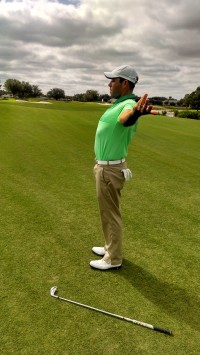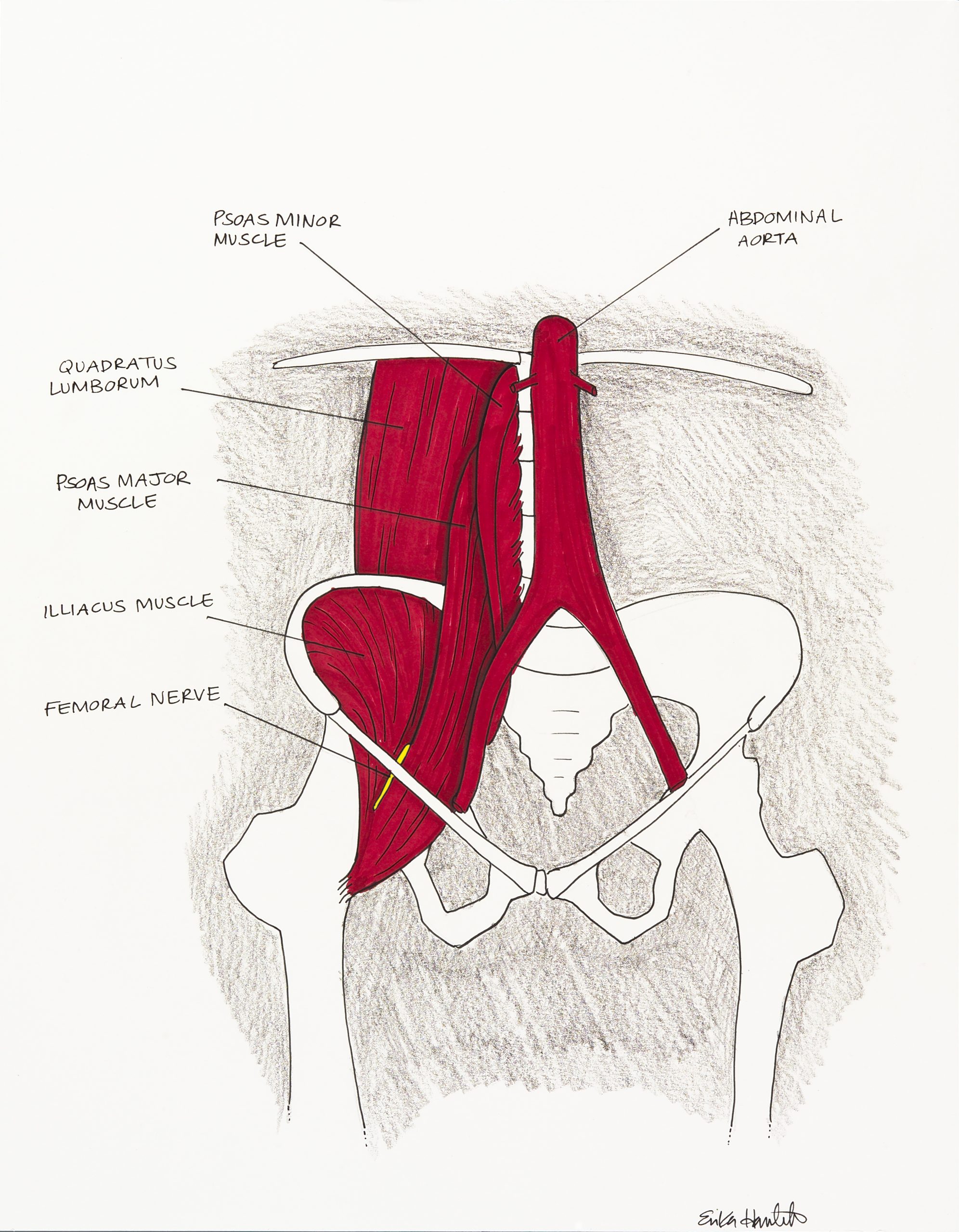by Julie Donnelly – The Pain Relief Expert
Low back pain, hip pain, knee pain, and sciatica – it is a surprise to most people to find that the same muscles cause each of these painful conditions. Stretching is vital for golfers in order to prevent injuries to each of the joints. This month we will be focusing on simple stretches you can do to release tension and increase your flexibility. Each blog is going to explain 1-2 muscles that cause pain and stiffness, and show a simple movement you can do to release the tension and stretch the muscle.
Let’s start with the #1 golfer’s pain – the low back.
There are so many muscles involved in low back pain that this is going to take several blogs to complete. Today we are going to look at two of the key muscles that cause low back pain.
The primary muscles that cause low back pain are the psoas and iliacus, which both insert into your upper thigh bone. These muscles enable you to bend forward (psoas) or pick up your leg (iliacus), so between them every time you sit down, take a step, or put your ball on the tee, you are contracting one or both of these muscles.
When they are shortened from repetitive strain, and you try to stand up straight, they are pulling down on your lumbar vertebrae and your pelvis, and you have pain in your low back &/or hip. You may be told that your lumbar curve is exaggerated toward the front, or you may also be told your pelvis is tilted forward or that your leg is “short.” We’ll talk about the thigh muscle that causes “short leg” syndrome in the next blog, but for now, your leg isn’t short, it’s just pulled up toward your trunk so it appears short. More on that the next time.
Since your pelvis will not fully return to its proper position until the muscle of your thigh is released, I’m going to show you a simple stretch you can do when you stand up from a chair, or after you take your golf shot.
Stand up straight and while keeping your pelvis still, don’t move your hips in any direction, lean back with your mid-back. Keep your head at a neutral, face forward, position so you don’t press on your esophagus .
You will feel some slight pain in your low back that is actually being caused by your psoas muscle being stretched. It should feel mildly uncomfortable and definitely not a sharp pain.

(This picture is also demonstrating a stretch for your upper arm, but we’ll talk about that in a future issue of this blog).
If you want to enhance this stretch, before leaning back, stand still and without moving your pelvis, bring your leg as far back as you can, keeping your knee straight. Now, lean back from your thoracic spine (mid-back) and face forward. You should be feeling it in your low back and also across the front of your thigh.
You can read more information about this stretch, as well as a lot of other good self-treatments and stretches, in my books; The Secret to Your Best Golf Game EVER and The 15 Minute Back Pain Solution.
I look forward to “chatting” with you in the next issue of Pain-Free Living where we’ll be talking about the muscle of your thigh that is key to releasing back pain.
Wishing you well,
Julie

